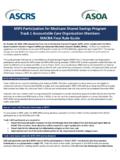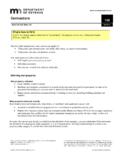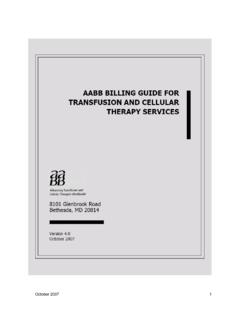Transcription of Forest law enforcement in Mozambique: An …
1 REPUBLIC OF mozambique ------------------------ MINISTRY OF AGRICULTURE NATIONAL DIRECTORATE OF FORESTRY AND WILDLIFE Forest law enforcement in mozambique : an overview Mission Report By: Filippo Del Gatto International Consultant Project: TCP/MOZ/2904 (A) Support for the implementation of Forest and wildlife legislation in mozambique DNFFB/FAO Maputo, September 2003 Title: Forest Law enforcement in mozambique : an overview - Mission Report Editor: Ministry of Agriculture/National Directorate of Forest and Wildlife Date: September, 2003 Place of edition: Maputo Final revision: Filippo Del Gatto National Directorate of Forest and Wildlife Pra a dos Her is Mo ambicanos, 2 Andar, MINAG, 1460 Tel. Fax Project TCP/MOZ/2904 (A) Support for the Implementation of the Forest and Wildlife Legislation in mozambique Forest Law enforcement in mozambique an overview Mission Report Prepared by Filippo Del Gatto DNFFB & FAO Maputo, mozambique September 2003 i Executive Summary According to the estimations carried out in this report, clandestine timber production in mozambique may be between 50 and 70 per cent of the total national production.
2 In roundwood terms this would mean between 90,000 and 140,000 m of unauthorised production per year. In monetary terms, the gross value of this production is quantifiable in the region of US$15-24 million. The non-payment of stumpage fees by this unregistered production causes an annual fiscal loss to the Mozambican government estimated in US$3-5 million. This is an annually recurring loss. The discounted net present value (NPV) of current and future losses, applying a 10% discount rate and allowing for declining timber production in line with a constant deforestation rate of , can be estimated as high as US$22-36 million. Due to this unregistered production, the present extraction rate of the most valuable Mozambican timber species may be between two and four times its sustainable potential.
3 Further research is needed to forecast the impact of this overexploitation on future supply. In the case of charcoal, probably only 1-5% of the total production is currently registered. This suggests that the informal production of charcoal could be more than 8 million bags per year. The market value of this amount of bags is probably around US$32-44 million, considerably higher than the amount estimated for roundwood. The calculation of the associated revenue loss is more complex because small quantities of charcoal are considered a non-commercial item for auto consumption and therefore tax exempt. However, the potential loss (without considering this exemption) could be US$ million per year and US$12 million in discounted NPV terms. These are tentative estimates, they should be considered as provisional numbers.
4 However, their order of magnitude clearly suggests that there is an evident case of national self-interest in tackling this issue. The principal recommendations from this report for the ongoing DNFFB-FAO TCP project to improve Forest and wildlife law compliance are the following: 1) On-the-ground assessments Field monitoring is essential to document the existence and scale of illegal operations, to highlight where enforcement is most needed, and to monitor progress in addressing the problem. Improving the capacity to carry out effective field monitoring activities should be regarded as one of the most important objectives of the new Forest law compliance strategy that is being prepared. This should be based on three central elements: adequate training of staff involved in field monitoring; adequate logistic/equipment support (transport, maps, GPS, cameras, etc.
5 ; the use of remote-sensing tolls such as aerial photographs and different types of satellite imaginary. ii 2) Log-tracking system Complementing ground monitoring with the implementation of a log-tracking system would offer the opportunity to tackle the problem on a more comprehensive basis. One important concern here is the availability of sufficient financial resources. Testing on a small-scale basis and if necessary sequencing these two instruments over a reasonable period of time (avoiding simultaneous start) are key issues. 3) Partnerships with other stakeholder groups To improve the effectiveness of roadside checkpoints, mobile patrols and field surveys it is important to analyse the possibility to form solid partnerships with other stakeholder groups interested in improving Forest and wildlife law compliance.
6 The experience of Vigilancia Verde in Ecuador could be explored as an interesting example. 4) Control of exports The analysis of timber trade data suggests that there may be some weaknesses in the current control of timber products exports. Further research is needed to understand this issue and to suggest possible remedies. 5) Community involvement As already widely acknowledged, to enhance the participation of local communities in Forest and wildlife law enforcement it is important to prepare the legal instruments that will define the functions of the community level institutions (Conselhos Locais de Gest o de Recursos Florestais e Faun sticos) created by the new legislation. These institutions could have a central role in organizing and supporting local Forest and wildlife law enforcement .
7 They could be in charge of (i) training and monitoring the work of the fiscais comunitarios, (ii) monitoring the payment of fines and ensuring that the 50% of their amount is redistributed among the people involved in detecting the illegal act, and (iii) that the 20% of the tax revenue derived from the exploitation of Forest or wildlife resources is reinvested transparently at local level. There are ongoing efforts working on these issues, so this recommendation only aims at highlighting their importance. 6) Training plan The new Forest law compliance strategy should include a specific training plan aimed at different stakeholders (fiscais, timber managers, logging crews, police, judiciary personnel, DNFFB and SPFFB employees, customs authorities, communities, NGO members, Forest professionals, etc.
8 The possible topics will depend on specific diagnostics, but they should probably include administrative procedures for simple licenses and concessions, Forest and wildlife legislation, Forest and wildlife crimes, professional ethics, and judicial procedures. 7) Certification Forest certification is an instrument that could strengthen the contribution of companies to Forest and wildlife law enforcement . A first contribution is its requirement to maintain mutually beneficial relationships between companies and communities. Secondly, the experience from Bolivia suggests that certification can act as an important incentive to legality when it is used as an indicator to reduce the legal requirements for Forest management, which allows at the same time to diminish the work load of the forestry authority that in this way can concentrate its efforts on other priorities.
9 Perhaps certification could do even more by linking (through conditions and recommendations ) the achievement and maintenance of this recognition to the accomplishment of specific measures against illegal logging and poaching. The iii ongoing effort to produce the FSC National Standards for mozambique represents the arena where such possibility could be further discussed. 8) Supporting legal charcoal production Improving the effectiveness of roadside checkpoints should surely contribute to controlling the informal trade of charcoal. To reduce its unregulated production it would be important to adopt instruments that could create incentives (and promote some level of investment) in legal charcoal production. The allocation of concessions specifically for charcoal production could be a valid instrument to consider.
10 The involvement of communities in these new concessions should be a priority. The recent AFLEG Ministerial Declaration recently signed in Cameroon represents a great opportunity for improving Forest law enforcement . It provides the momentum and backing necessary to act. It also indicates a wide list of priorities. The TCP project Support for the Implementation of the Forest and Wildlife Legislation in mozambique could hardly have started in a more appropriate moment. It can help provide the operational mechanisms for implementing the commitments derived from this continental Declaration. iv Table of Contents Executive 1. Illegal logging in mozambique : how much could it be?.. 2. Analysing timber export/import 3. Informal charcoal 4.















